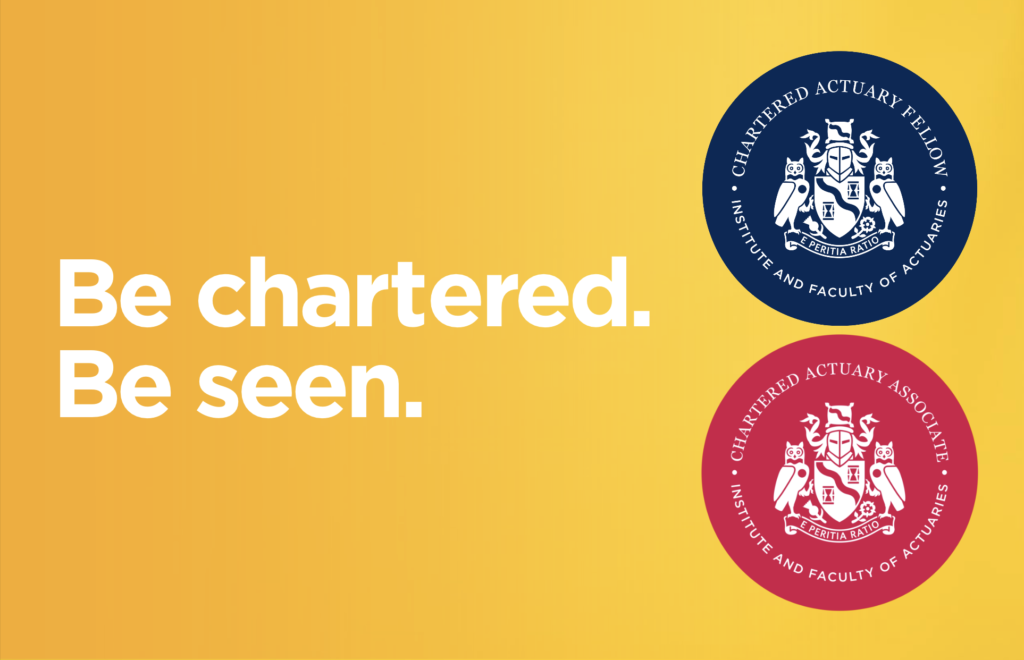
I last talked about Chartered Actuary status here two years ago when the Institute and Faculty of Actuaries (IFoA) set out how they had decided to introduce it. I focused then on what we needed to do to make this a change worth making: like offering roles for actuaries on completion of core practice modules; not necessarily insisting on further actuarial specialisation as a requirement for senior roles within firms; getting comfortable with a much wider range of specialisms amongst those we consider to be actuaries. Some were already doing this then, but most of us have still not travelled very far in this direction. And I note that the Route to Becoming An Actuary still features a diagram where an IFoA Associate is shown as a milestone on the way to the final destination of becoming a Fellow.
But the fact is that Chartered Actuary status has finally been launched this week. I am a retired actuary now but I have claimed chartered status nevertheless because it is a designation I very much think needs to be supported. However ultimately the success of it will not depend on employers or even the profession itself, and certainly not on retired old duffers like me. It will depend on students now and in the future. Therefore, in the unlikely event that any actuarial students are reading my blog, I am addressing this piece directly to you.
Whether you are a student who, like most actuarial students, started work with no or perhaps just one or two exam exemptions, or a graduate from an actuarial science undergraduate programme with most or all of the core practice exemptions, this means that the barriers to you starting to take your actuarial career off in the direction you want it to go in and think the world needs just got a bit easier to jump. If you are a graduate from some actuarial MSc programmes or even possibly a single qualification like the MMath in Mathematics and Actuarial Science at the University of Leicester (last plug for my former employer, I promise), you may be able to claim Chartered Actuary Associate status already.
Using it may not necessarily be so easy, particularly in the early years. Some employers may be resistant to the new designation. But if you are planning to join the profession to make a positive difference in the world, and that is in my view the best reason to do so, then you are going to have to shake a few things up along the way.
Perhaps there is a type of actuarial business you think the world is crying out for but it doesn’t know it yet because it doesn’t exist. Start one.
Perhaps there is an obvious skill set to run alongside your actuarial one which most actuaries haven’t realised would turbo-charge the effectiveness of both. Acquire it.
Perhaps your company has a client who noone has taken the time to put themselves in their shoes and communicate in a way they will properly understand and value. Be that person.
Or perhaps there are existing businesses who are struggling to manage their way in changing markets and need someone who can make sense of the data which is telling them this. Be that person.
Whatever you decide to do, do it with a chartered actuary designation, whether associate or fellow, as a badge that you are prepared to look beyond traditional ways of doing things and, where the historical way of doing things is obviously no longer working or could clearly be massively improved, do the hard work of rethinking things from first principles if necessary. If you do it right, this can be seen as a badge for actuaries who are both rigorous and flexible in their thinking. If that happens, the chartered actuary designation will flourish and it will also be of maximum benefit to you too.
So now it is up to you what becomes of Chartered Actuary status. I am really looking forward to watching what you do with it!
